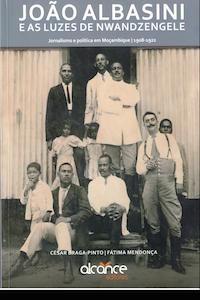Faculty Publications
 Revista de Estudios Hispánicos
Revista de Estudios Hispánicos
Tomo LV, Número 3
Dossier: Configuraciones de lo andino
Introducción: Jorge Coronado and Juan G. Ramos
Publication year: 2021
¿Cómo hablar de lo andino hoy en día o, dicho de otra manera, por qué se habla de lo andino en una gama variada de disciplinas académicas además de en las sociedades cuyas culturas se (auto)caracterizan como tal? Hablar de lo andino puede tomar diferentes caminos, dependiendo del contexto y de acuerdo a los interlocutores y su posicionalidad étnica, racial, política o geográfica. En el imaginario colectivo, lo andino nos remonta a algún diálogo sobre la región que asociamos con la cordillera de los Andes y, en algunos casos, concretamente a la región central de los Andes, principalmente Bolivia, Perú y Ecuador. Sin embargo, la cordillera de los Andes, es decir, el mundo andino y su diversidad climática, topográfica, geológica, diversos ecosistemas y compleja geografía recorren desde casi el nivel del mar en Venezuela, pasando por Colombia, Ecuador, Perú, Bolivia, hasta partes de Chile y Argentina. Esta vasta región que comprende gran parte de Sudamérica ha sido también el nodo de cohabitación, de encuentros, de disputas, de comercio entre grupos originarios por miles de años, incluso con regiones que hoy asociamos con la costa del Pacífico o la Amazonía. De igual manera, dicha región ha sido el lugar de un violento proceso de colonización que también esclavizó africanos y los introdujo a lo largo de los territorios políticos y culturales que forman parte de la región andina. […]
Visiones de los Andes
Ximena Briceño y Jorge Coronado, coordinadores
Publication year: 2019
¿Cómo funciona el concepto de paisaje en los Andes? ¿Cómo pensar lo andino por medio del paisaje? ¿De qué manera se superponen el concepto del trabajo, los discursos de la geografía, las ciencias sociales y las prácticas del extractivismo, la arqueología y la historia del arte en el paisaje andino? Las autoras y autores de este volumen contestan meticulosamente a estas preguntas en una colección dedicada a explorar el archivo y la práctica del paisaje en los Andes. Visiones de los Andes apuesta por una revisión andina del paisaje, situando los conceptos de paisaje y región como mediaciones en tensión entre los polos de naturaleza y cultura. El resultado revela una historia de restricciones regionales encontradas, conflictivas e incluso contradictorias que constituye un importante aporte para una discusión urgente en los estudios andinos sobre la centralidad del paisaje en el imaginario de la región.

María Jesús Barros García
 A Violência das Letras
A Violência das Letras
César Braga-Pinto
Publication year: 2018
A Violência das Letras articulates the need and the desire not only to imagine, but also to construct new discursive practices, as well as a new politics of the friendships, independent of both consanguinity and territorial, national, regional, neighborhood or domestic proximity. One of its assumptions is that neither friends, family, nor nation-perhaps not even literature-can be a refuge for what is irreconcilable in politics and public life.
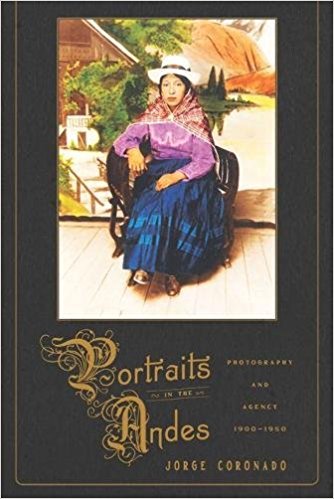 Portraits in the Andes: Photography and Agency, 1900-1950
Portraits in the Andes: Photography and Agency, 1900-1950
Jorge Coronado
Publication year: 2018
Portraits in the Andes examines indigenous and mestizo self-representation through the medium of photography from the early to mid twentieth century. As Jorge Coronado reveals, these images offer a powerful counterpoint to the often-slanted, predominant view of indigenismo produced by the intellectual elite.
Photography offered an inexpensive and readily available technology for producing portraits and other images that allowed lower- and middle-class racialized subjects to create their own distinct rhetoric and vision of their culture. The powerful identity-marking vehicle that photography provided to the masses has been overlooked in much of Latin American cultural studies—which have focused primarily on the elite’s visual arts. Coronado's study offers close readings of Andean photographic archives from the early- to mid-twentieth century, to show the development of a consumer culture and the agency of marginalized groups in creating a visual document of their personal interpretations of modernity.
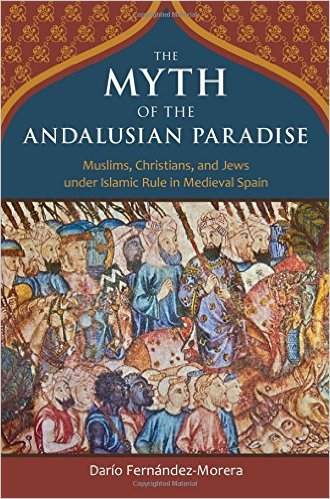
Myth of the Andalusian Paradise: Muslims, Christians, and Jews under Islamic Rule in Medieval Spain
Darío Fernández-Morera
Publication year: 2016
Scholars, journalists, and even politicians uphold Muslim-ruled medieval Spain—“al-Andalus”—as a multicultural paradise, a place where Muslims, Christians, and Jews lived in harmony.There is only one problem with this widely accepted account: it is a myth.
In this groundbreaking book, Northwestern University scholar Darío Fernández-Morera tells the full story of Islamic Spain. The Myth of the Andalusian Paradise shines light on hidden history by drawing on an abundance of primary sources that scholars have ignored, as well as archaeological evidence only recently unearthed.
This supposed beacon of peaceful coexistence began, of course, with the Islamic Caliphate’s conquest of Spain. Far from a land of religious tolerance, Islamic Spain was marked by religious and therefore cultural repression in all areas of life and the marginalization of Christians and other groups—all this in the service of social control by autocratic rulers and a class of religious authorities.
The Myth of the Andalusian Paradise provides a desperately needed reassessment of medieval Spain. As professors, politicians, and pundits continue to celebrate Islamic Spain for its “multiculturalism” and “diversity,” Fernández-Morera sets the historical record straight—showing that a politically useful myth is a myth nonetheless.
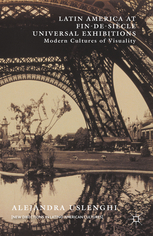
Latin America at Fin-de-Siecle Universal Exhibitions: Modern Cultures of Visuality
Alejandra Uslenghi
Publication year: 2016
Spanning from the 1876 exposition in Philadelphia, through Paris 1889, and culminating in Paris 1900, this book examines how Argentina, Brazil, and Mexico forged the image of a modernizing Latin America at the moment of their insertion into the new visual economy of capitalism, as well as how their modern writers experienced and narrated these events by introducing new literary forms and modernizing literary language. Following these itineraries overseas and back, Uslenghi illuminates the contested, political, and transformative relations that emerged as images and material culture travelled from sites of production to those of exhibition, exchange, and consumption.

Ficción adulterada: Pasiones ilícitas del entresiglo venezolano
Nathalie Bouzaglo
Publication year: 2015
Ficción adulterada examines narratives of adultery from late nineteenth- and early twentieth-century Venezuelan cultural productions that reveal the contradictions and complexities of constructing a national culture in an emergent nation. I argue that these narratives inscribed emergent models of politics, aesthetics, and collective fantasies around the idea of adultery and/or adulteration. Here, my understanding of adultery is broad, and corresponds with its perception during the period: not only is it any voluntary, extramarital, sexual, or affective relationship that, when discovered or suspected by the spouse, can place the marriage at risk and erode the respectability associated with normative sexuality, it is also the idea of adulteration, mixing, or contamination. Adultery thus understood constitutes a productive approach to the fictional corpus and relevance of the literary institution, but also and principally to a group of ideas and problems that reveal local anxieties.
Jose Albasini À Procura de Saúde: crônicas de um doente/ In Search of Health: chronicles of a sick man
César Braga-Pinto
Publication year: 2015
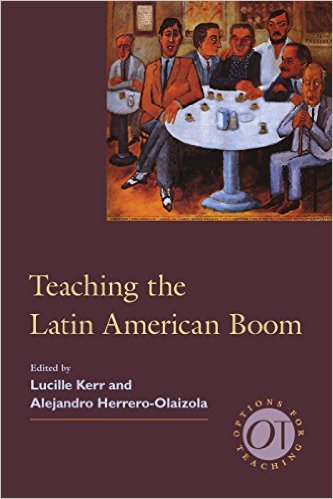
Teaching the Latin American Boom
Lucille Kerr
Publication year: 2015
In the decade from the early 1960s to the early 1970s, Latin American authors found themselves writing for a new audience in both Latin America and Spain and in an ideologically charged climate as the Cold War found another focus in the Cuban Revolution. The writers who emerged in this energized cultural moment—among others, Julio Cortázar (Argentina), Guillermo Cabrera Infante (Cuba), José Donoso (Chile), Carlos Fuentes (Mexico), Gabriel García Márquez (Colombia), Manuel Puig (Argentina), and Mario Vargas Llosa (Peru)—experimented with narrative forms that sometimes bore a vexed relation to the changing political situations of Latin America.This volume provides a wide range of options for teaching the complexities of the Boom, explores the influence of Boom works and authors, presents different frameworks for thinking about the Boom, proposes ways to approach it in the classroom, and provides resources for selecting materials for courses.
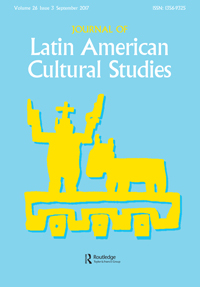
Special Issue on Modern Argentine Photography: Horacio Coppola and Grete Stern
A Migrant Modernism. Grete Stern's Photomontages
Alejandra Uslenghi
Publication year: 2015
The article analyses the photomontage production of German-Argentine photographer Grete Stern, exploring the continuities and reconfigurations of both formal concerns and socio-political valences between her formative years in Berlin and her work in Buenos Aires, especially with regard to the visual deconstruction of dominant perceptions of femininity and the (female) body in relation to a modernizing culture. The comparative analysis aims at disarticulating a derivative or causal relationship between her Bauhaus roots and her ground-breaking Argentine production, as well as connecting them through a focus on processes of social and aesthetic migration. The article's claim is that by introducing photographic photomontage in the popular female press in late 1940s and early 1950s, Stern's Sueños series not only helped establish a working and middle-class female audience for photographic modernism, but also trained her readers in the visual language of modern culture.
João Albasini e as luzes de Nwandzenguele: literatura e política em Moçambique 1908-1922
César Braga-Pinto
Publication year: 2014
"In 1932, on the tenth anniversary of Albasini’s death, Karel Pott, then the director ofBrado Africano, published a tribute to Albasini: “The history of Albasini’s life has yet to
IJAHS Vol. 49, No. 1 (2016) Book Reviews 135
be written, and his magnificent articles in defense of Law, Reason and Justice have yet to
be compiled …” (p. 412). More than sixty years later historian José Soares Martins, pen
name José Capela, echoed Pott: “Mozambique owes João Albasini a published critical
analysis of his journalistic essays … [because they] capture a critical period in
[Mozambique’s] history in all of its excitement” (p. 13). César Braga-Pinto and Fátima
Mendonça clearly intend this book, João Albasini and the Lights of Twilight: Journalism
and Politics in Mozambique 1908–1922, to respond to those calls. It does so beautifully.”
Jeanne Penvenne, Tufts U.
Page 1 / 2 / 3



